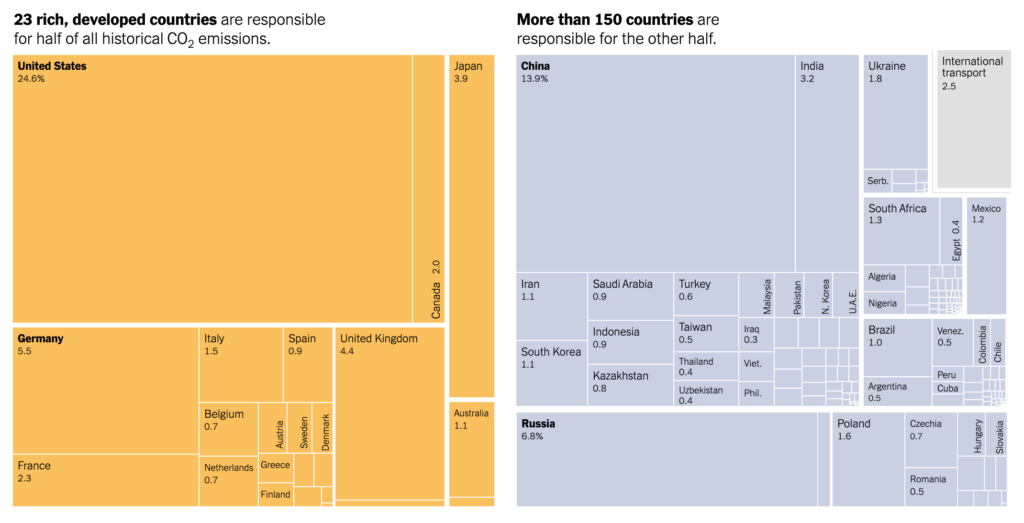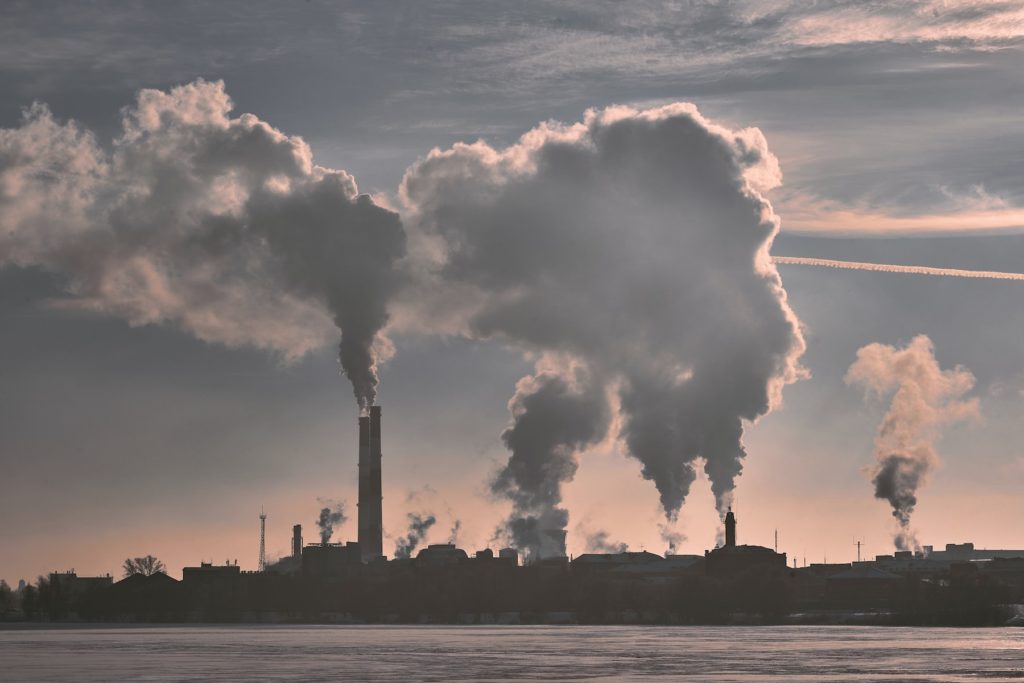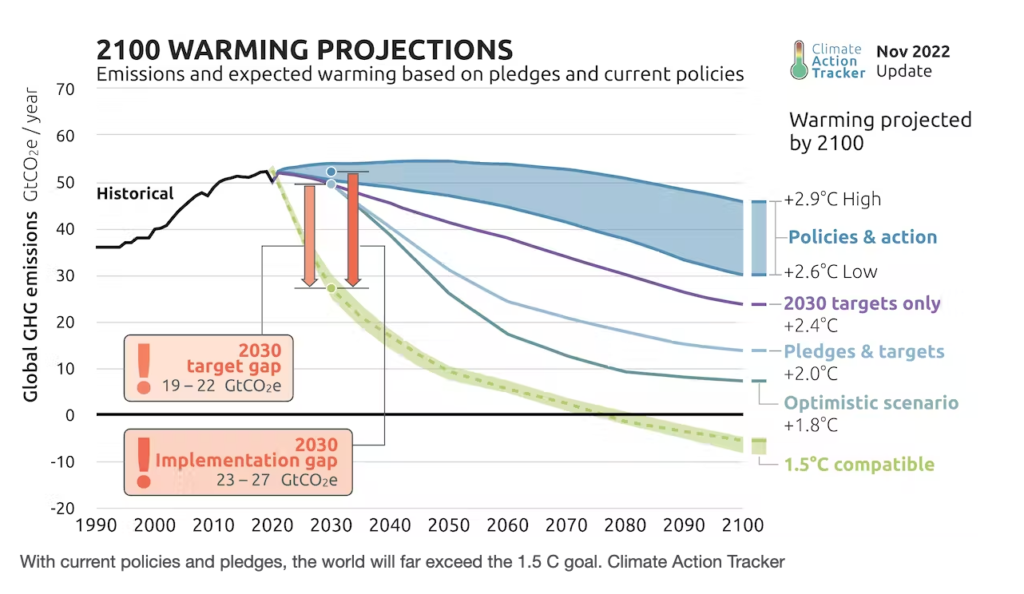What The Heck is COP?
COP stands for the Conference of the Parties and is hosted annually by the United Nations Climate Change Conference (UNCCC). COP is a decision-making body working at the global scale to halt climate change and adapt to the impacts of climate change.
COP27 specifically was the 27th conference (since the UN started them in 1992), and was held this November in Sharm El Sheikh, Egypt, with more than 92 heads of state attending as well as 35,000 delegates from 190 countries.
COP is a chance for the whole world to find and agree upon solutions to the climate crisis, and every year looks a little different. This year in particular, there were several noteworthy outcomes.
What Came Out of COP27?
1) Loss & Damages
Before we dig into some of the more disappointing aspects of COP27, we want to kick things off with one major win: The globally pooled fund for countries most affected by climate change, also known as a “loss and damages fund.”
Rich countries are disproportionately responsible for climate change and its impacts. About 10 years ago, the world’s wealthiest economies committed to providing $100 billion a year in climate financing for poorer countries, but has continually fallen short of that promise. In fact, some estimates show that developing countries will need at least $2 trillion per year by 2030 to address the impacts of climate change. The loss and damages fund would be an attempt to make up that shortfall.

However, there’s still a lot to figure out when it comes to honing this fund. For example, the size of the funding has yet to be set, as well as details regarding which countries will have access to it — which are kind of the two most important aspects of the idea.
In terms of climate justice, it’s a step in the right direction, but there’s still much work to be done before most impacted countries will see the benefits.
2) No Clear Call for a Phase Down of Fossil Fuels
Now onto some of the disappointments. While the final paper coming out of COP27 does call for “exerting all efforts at all levels to achieve the Paris agreement temperature goal of holding the increase in the global average temperature to well below 2˚C above pre-industrial levels and pursuing efforts to limit the temperature increase to 1.5 ˚C above pre-industrial levels,” it does not call for a total phase-down of fossil fuels, falling drastically short of what was expected.
Many of the delegates and activists expressed that this omission of fossil fuels from the final draft demonstrated that we’re still missing the point. A phase down of fossil fuels MUST occur to limit warming to 1.5˚C. To leave it out is to let the fossil fuel industry continue polluting.

3) 1.5˚C of Warming
A new report from the United Nations Environment Programme in late October showed that there is “no credible pathway to 1.5˚C in place” currently. Activists hoped COP27 could help alleviate that, but with no direct call to stop consumption of fossil fuels, there isn’t really a way to limit that kind of warming.
While a total elimination of fossil fuel consumption might seem far-reaching, the reality is we’ve had more than 50 years to make the transition to clean energy. But decades of concerted misinformation from fossil fuel companies kneecapped those efforts.
“We had our chance to make incremental changes, but that time is over. Only a root-and-branch transformation of our economies and societies can save us from accelerating climate disaster,” said Inger Andersen, Executive Director of UNEP.

Even then, simply eliminating fossil fuel use isn’t enough to meet the 1.5˚C goal. We’ll need to draw down carbon as well. The World Meteorological Organization estimates that we have a 50-50 chance of reaching 1.5˚C of warming in just the next five years.
4) Oil & Gas Influence
More than 600 fossil fuel lobbyists attended COP27, a 25% increase from last year, and absolutely dwarfing representation from frontline countries and communities.
This outsized attendance by the fossil fuel industry absolutely played a role in the limited scope of solutions that COP27 finally landed on and their attendance at future COPs is only expected to grow. UN officials have suggested limiting corporate attendance at these conferences, but nothing solid has emerged yet.

Where that leaves Northwest Washington
COP27 might seem like a world away from Northwest Washington, but the decisions made at this scale influence the speed and efficiency of the solutions we must work to create locally.
With COP27 falling short of the goals needed to secure a livable future, we have our work cut out for us. RE Sources is gearing up for a big year of climate and ecological wins to continue protecting this place we love. We’ll need more clean energy, more ecological protections, more help fighting disinformation from the fossil fuel industry, and just outcomes for frontline communities than ever before. While the outcomes of COP27 are disappointing, we know that just means acting locally is more critical than ever. We hope you’ll join us in this work!
Actions You Can Take Right Now
Join our Future Forests campaign to advance ecological forestry throughout Northwest Washington. Healthier forests both store carbon and offer climate resilience from droughts and floods.
Take our 100% Northwest Pledge to help transition Northwest Washington to 100% clean energy by 2030. We’ll make sure you never miss a chance to advocate for a just transition away from fossil fuels to a renewable, reliable clean energy system.
